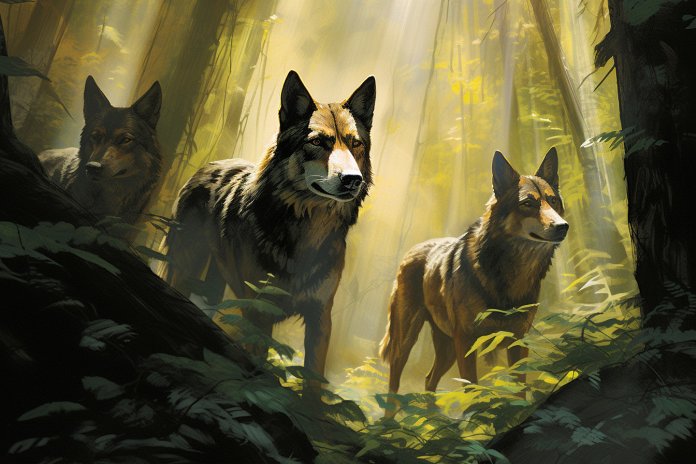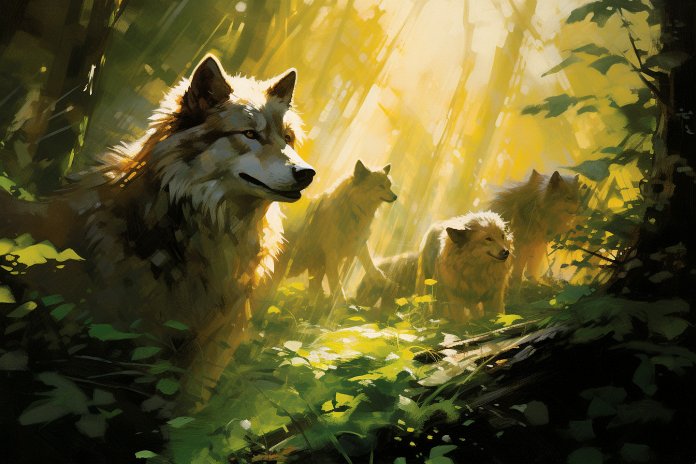
When you look into your dog’s eyes and pet them, it’s hard to believe that their ancestors once lived in the wild. But the truth is, all dogs share a common ancestor with wild wolves. While domesticated dogs have adapted to living with humans, they still possess some instincts that would help them survive in the wild. In this article, we’ll explore the signs that indicate if your dog could live in the wild, their body language cues, the history of dogs living in the wild, the science behind their domestication, and how you can train them to survive in the wild.
Signs Your Dog Could Live in the Wild
To determine if your dog would thrive in the wild, you can observe their behavior. If they are skilled at detecting and hunting small animals, have a strong sense of smell and hearing, and mark their territory, these are indications that they could survive in the wild. Burying bones or toys for future use is also a sign of their wild instincts.
Body Language
Certain body language cues can suggest that dogs are equipped for living in the wild. These include being alert, guarding, raising their ears, having their back hair on edge, stalking, and holding their tail up.
Other Signs
Additional signs that your dog could live in the wild include burying bones or toys, defending their territory or being aggressive when threatened, displaying a pack mentality, and marking their territory.
The History of Dogs Living in the Wild
Dogs have a long history of living alongside humans, but their ability to survive in the wild is rooted in their connection to wild dogs like the South Asian Wolf. All dogs, regardless of breed, are part of the same species and share genetic ties with wolves, foxes, and jackals.
The Science Behind Dogs Living in the Wild
The domestication of dogs likely occurred thousands of years ago, possibly due to their pack mentality and loyalty. Dogs may have aided in their own domestication by scavenging from humans and growing tamer with each generation. Genetically, dogs have been extensively cross-bred, resulting in homogeneous genes.
Training Your Dog to Survive in the Wild
While domesticated dogs still possess some instinctual behaviors, training them to survive in the wild is possible. Traditional human commands may not be useful, so teaching them to eat certain plants, bugs, and hunt small game would be more helpful. Spending time outdoors with your dog can also help them acclimate to the sights, sounds, and smells of the wild, activating their survival instincts.
“In the wild, even the sweetest dog can tap into their ancestral instincts and survive.”

Tips & Things to Know
1️⃣ Look out for behavioral signs: Pay attention to your dog’s ability to detect and hunt small animals, their territorial behavior, and their habit of burying possessions. These behaviors indicate that they may have the instincts to survive in the wild.
2️⃣ Watch for body language cues: Alertness, guarding behavior, raised ears, raised back hair, stalking, and a tail held high are all body language cues that suggest your dog is equipped for living in the wild.
3️⃣ Understand the history and science behind dogs living in the wild: Dogs are historically linked to wild dogs like the small South Asian Wolf, and genetically, they have been cross-bred to the point where their genes are homogeneous. Training your dog to survive in the wild may involve teaching them to eat certain plants, bugs, and hunt small game, as well as spending time outdoors to familiarize them with the sights, sounds, and smells of the wild.
Frequently Asked Questions, Answered ✅
1. What are some signs that indicate a domestic dog could survive in the wild?
– Some signs include the ability to detect and hunt small animals, territorial behavior, and burying bones or toys for future use.
2. How can you tell if a dog is equipped for living in the wild based on their body language?
– Body language cues such as being alert, guarding, raised ears, back hair on edge, stalking, and a tail held up can indicate that a dog is equipped for living in the wild.
3. What is the historical link between dogs and wild dogs like the small South Asian Wolf?
– Dogs are historically linked to wild dogs, such as the small South Asian Wolf, and all dogs belong to the same species, Canis familiaris. This link allows dogs, both feral and domesticated, to survive well in the wild.
4. How were dogs potentially domesticated from wolves?
– Some theories suggest that wolves were domesticated from dogs over 10,000 years ago, while others argue it may have been much earlier. Wolves may have been considered capable of domestication due to their pack mentality and loyalty. Dogs may have also aided in their own domestication by scavenging off humans and growing tamer over generations.
5. Can domesticated dogs learn to survive in the wild?
– Yes, even domesticated dogs may have some instinct left in them that could help them adapt and survive in the wild. Training them to eat certain plants and bugs, hunt small game, and spending time outside to familiarize them with nature can increase their chances of survival in the wilderness.